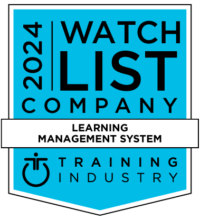In September 2021, World at Work’s study Trends in DEI Practices and Policies reported that 83% of responding organizations were taking action on DEI (Diversity, Equity, Inclusion) initiatives. As businesses embrace the advantages of creating diverse organizations, including improved decision making and innovation, increased retention rates, and stronger financial returns, human resource departments are prioritizing inclusive hiring strategies.
Unfortunately, the COVID-19 pandemic highlighted an inconvenient truth about the diverse workforce: these underrepresented groups—who are already vulnerable to discrimination and racism—also face a disproportionately greater safety risk on the job because they make up the majority of frontline or essential workers.
Nationwide, 4 out of 10 frontline workers are Black, Hispanic, and/or Asian-American/Pacific Islanders, or a category other than white. Workers of color are especially overrepresented in critical jobs like bus driving, trucking, warehousing, cleaning services and healthcare, childcare, and social services—roles that require them to work with the public with no option to work from home to avoid risk.
Despite representing one-half of the workforce in general, women account for two-thirds of frontline workers, representing over 75% of healthcare and over 85% of childcare and social services staff.
This startling reality means that providing robust safety training to these underrepresented groups is essential. Employees must have the resources and training to protect themselves on the job, not only from COVID-19 and other illnesses but also accidents, injuries, confrontation with disgruntled customers, and even mental health challenges that arise from being placed in these stressful situations.
Online learning and learning management systems (LMS) offer strong solutions for delivering, tracking, and managing the high-quality, effective safety, vocational, and compliance training necessary to help underrepresented groups feel safer and less vulnerable on the job.
Professional workplace training content providers offer courses for leadership, managers, supervisors, and employees in regulatory compliance, health and occupational safety, anti-harassment and discrimination, dealing with unruly customers and workplace violence. Streaming platforms provide 24/7 access, across devices. Management systems, such as those offered in an LMS or compliance management system, allow eLearning administrators the ability to identify employees who have completed training, those who might be struggling with courses or deadlines, and those who need additional training or resources. HR directors, designated managers and/or supervisors may be able to gain real-time insight into problematic topics, departmental trends or completion ratios that could impact the well-being of diverse constituencies within the company.
Here are five tips for how to use eLearning programs to make your company a more inclusive and safer place to work.
- Provide 24/7 accessibility on any device. Online training platforms allow essential training, learning and development to occur whenever and wherever it is convenient, across devices. This makes it perfect for delivering safety or mandated training to frontline and shift workers who may not have time or access to employer provided computers to train during their shift. And, with nearly one-fourth of frontline workers living in low-income families, this easy access also means they can train offsite without having to cut into their work hours or pay. Make sure the streaming platform renders the content and navigation the same across devices and has a ‘stop and resume’ feature so that if the learner needs to stop midstream, they can pickup later exactly where they left off.
- Enable caregivers to train at home. More than one-third of frontline workers have family care obligations, particularly young children at home, which means childcare is a primary concern. Establishing HR policies that allow employees to flex their training hours eliminates the additional stress of staying late after their shift to complete training. It’s one thing to offer technology which flexes; another to create policies which recognize individuals’ work/life balance and other responsibilities.
- Create situational instruction for specific needs. Not all essential workers need the same type of training even within the same setting. In a hospital, for example, nurses, aides, and other direct care staff face a much higher risk of violent patient confrontation than do janitorial and food service workers. And in retail, clerks and sales floor staff are much more likely to encounter disgruntled customers than warehouse workers or management. eLearning solutions allow you to adapt the content to workers’ individual needs and deliver the most pertinent, relevant training without wasting their time with modules they don’t need.
- Deliver culturally appropriate training. Evidence shows that any type of training is more effective when learners see themselves represented in the content, and cultural differences can impact learning engagement and retention. eLearning tools provide the flexibility to adapt training modules to include diverse characters and trainers that match the race, ethnicity, or gender identity of learners, which helps the training and situations addressed feel more realistic and relevant.
- Ensure discretion and privacy. The burden of mental illness is disproportionately high for people of color, and 50% more women are treated for mental illness than men. Despite widespread acknowledgement of the mental health crisis affecting people and workplaces around the country, many people still feel significant stigma and shame in admitting they need help. eLearning solutions make it easy for employers to deliver much-needed mental health training resources to their staff in the privacy of their own homes to ensure discretion.
Creating a diverse workplace culture cannot come at the expense of workers’ safety. Companies have a responsibility to ensure all employees are well-trained to safeguard their physical and mental wellbeing. eLearning solutions make it easy to create and deliver the robust, inclusive, and culturally sensitive safety training and educational content employees need to be productive and protected.






